US Coast Guard Cutter Healy, Scientists Deploy Ice Stations
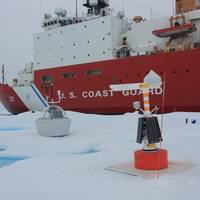
U.S. Coast Guard Cutter Healy (WAGB 20) crew and embarked researchers ventured onto a floe of multi-year ice for the first of three multi-instrument ice stations in the Arctic Ocean Basin late July and early August.As the Healy carefully approached and maintained position alongside an ice floe above 77 degrees north, the crew and a team of scientists, working in cooperation with the Office of Naval Research, (ONR) offloaded a diverse collection of equipment on to the floe carefully…
3D Printing: Navy Builds Up Additive Manufacturing on Ships
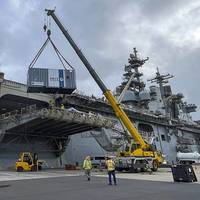
The U.S. Navy has long valued the potential of additive manufacturing (AM) and 3D Printing.AM refers to the depositing of material layer by layer to create an object. For the Navy, it’s not practical to carry every replacement part for every system on a ship, and it can be difficult to forecast if or when parts will fail. AM provides a flexible source of supply in being able to make parts instead of ordering them and waiting for them to arrive, especially for warships at the far end of the supply chain.
Subsea Defense: Navy Deepens Commitment to Underwater Vehicles
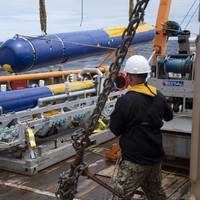
The U.S. Navy uses unmanned and robotic underwater vehicles for a multitude of functions, including environmental sensing, mine hunting, and salvage. The Navy plans to evolve an unmanned systems operating concept that is platform agnostic and capable of operating in highly complex contested environments with minimal operator interaction.The most recent edition of the Navy’s Unmanned Systems (UxS) Roadmap was issued in 2018, and a new version is expected in the near future. The 2018 document states that UxS will operate in every domain…
Measuring the Hostile Ocean Beneath Hurricanes
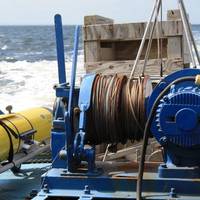
Unmanned Vehicles Collect Data for Improving Storm ForecastsThe influences of ocean conditions and currents on living environments are now more widely appreciated—from the Earth’s climate and severe weather conditions to fisheries and biodiversity. Sustained and widespread measurements are needed to provide essential clues for understanding the oceans, for effective monitoring of environmental changes, and for helping to clarify the long-term effects of global warming.To meet this challenge, ocean researchers have invented various types of unmanned observing platforms.
Coast Guard Preps for Arctic Research
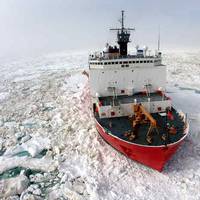
A team of scientists from the U.S. Coast Guard (USCG) Research and Development Center (RDC) will depart from Seward, Alaska, for a technology evaluation in the Arctic aboard the Coast Guard Cutter Healy Aug. 8, the Coast Guard announced. According to the USCG, the RDC is leading a multiagency team to support Arctic Shield 2014, a 17th Coast Guard District initiative. The purpose of their month-long evaluation is to improve USCG capabilities in the Arctic region, specifically in the areas of boat operations, communications, navigational safety and oil spill response.
Scientific Team Arctic-bound Aboard Cutter 'Healy'
A team of scientists from the Coast Guard Research and Development Center (RDC) is to depart shortly from Seward, Alaska, for a technology evaluation in the Arctic aboard the Cutter 'Healy informs USCG. The RDC is leading a multi-agency team to support Arctic Shield 2014, a 17th Coast Guard District initiative. The purpose of their month-long evaluation is to improve Coast Guard capabilities in the Arctic region, specifically in the areas of boat operations, communications, navigational safety and oil spill response. “The RDC plays a key role in charting the service’s future efforts in the Arctic by evaluating new and emerging technologies for applicability to Coast Guard operations in a harsh and remote environment,” said Capt. Dennis Evans, commanding officer of the RDC.
Huge Waves Measured for First Time in Arctic Ocean
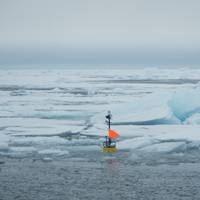
As the climate warms and sea ice retreats, the North is changing. An ice-covered expanse now has a season of increasingly open water which is predicted to extend across the whole Arctic Ocean before the middle of this century. Storms thus have the potential to create Arctic swell – huge waves that could add a new and unpredictable element to the region. A University of Washington researcher made the first study of waves in the middle of the Arctic Ocean, and detected house-sized waves during a September 2012 storm. The results were recently published in Geophysical Research Letters.
Submersible Cyclops : Hull Design "Revolutionary"
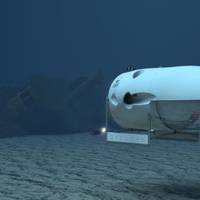
OceanGate Inc. announced the completion of the initial carbon fiber hull design and feasibility study for its next generation manned submersible – Cyclops. Under a contract issued to Boeing Research & Technology (BR&T), OceanGate, the Applied Physics Laboratory at the University of Washington (APL-UW) and Boeing have validated the basic hull design for a submersible vehicle able to reach depths of 3,000 meters. With its large 180-degree borosilicate glass dome, the new vehicle will offer clients a chance to examine the environment…
NOAA Buoys Deployed in the Arctic
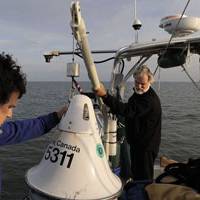
Now traversing the Northwest Passage, the Ocean Watch crew - four professional sailors, a scientist and an educator - recently completed the deployment of three NOAA Global Drifter Program buoys. Dr. Ignatius Rigor, research scientist at the University of Washington Applied Physics Laboratory (UW-APL) Polar Science Center and Coordinator of the International Arctic Buoy Program (IABP) is directing these activities. This project, one of 8 scientific projects planned throughout the 13-month Around the Americas expedition…
USN Procedures Under A Microscope In Wake Of Trawler Sinking
The U.S. Navy, eager to keep its submarines hidden as much as possible, rejected three official recommendations aimed at preventing collisions like the one that sank a Japanese fishing boat off Hawaii on Friday, leaving nine people missing, feared drowned. The National Transportation Safety Board had faulted the Navy's submarine surfacing procedures, its way of reporting accidents and what the board deemed inadequate rest time for key watch officers while submarines are under way. When the Navy spurned all of its advice, the independent five-member board shut its books on the case, terming the Navy's response "Closed -- Unacceptable Action," documents made available on Monday showed.
Royal Navy Submarine Incident Kills Two
Royal Navy submarine HMS Tireless (S88) SHOWN in the arctic ice. Tireless is taking part in ICEX-07 with the Los Angeles-class fast attack submarine USS Alexandria (SSN 757) and the Applied Physics Laboratory Ice Station (APLIS). U.S. Navy photo by Lt. The Royal Navy submarine HMS Tireless, participating in the Joint U.S. Navy/Royal Navy Ice Exercise 2007 (ICEX-2007) in the Arctic Ocean, experienced an explosion of a self contained oxygen generation candle that killed two crew members and injured one. The explosion occurred on March 21. The injured member of the crew has been transported by an Alaska Air National Guard C-130 to Anchorage for treatment. ICEX-2007 and Royal Navy officials have confirmed that the Tireless is safe and operational and that a full assessment is being conducted.
Submarine Force Participates in Ice Exercise 2007
Los Angeles-class fast attack submarine USS Alexandria (SSN 757) is submerged after surfacing through two feet of ice during ICEX-07, a U.S. Navy and Royal Navy exercise conducted on and under a drifting ice floe about 180 nautical miles off the north coast of Alaska. U.S. Navy photo by Chief Mass Communication Specialist Shawn P. EklundCommander, Submarine Force has announced the participation of USS Alexandria (SSN 757), home ported in Groton, Conn., in a joint U.S. Navy/Royal Navy exercise being conducted in the Arctic Ocean in March and April. Ice Exercise 2007 (ICEX-2007) will be directed by Capt Ed Hasell, officer in charge of the U.S. Navy�s Arctic Submarine Laboratory in San Diego, Calif.









